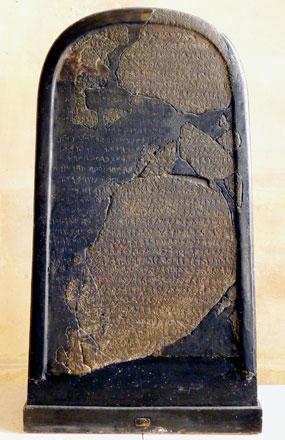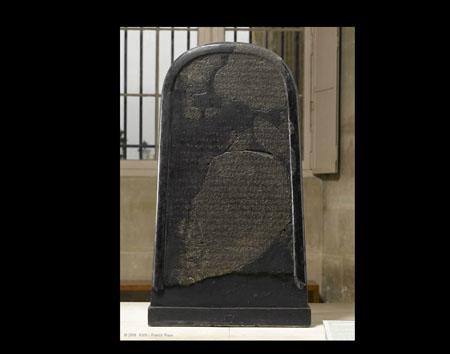You are here
French ambassador discusses Jordan’s request to retrieve Mesha Stele from Louvre
By JT - Jul 28,2015 - Last updated at Jul 28,2015
AMMAN — French Ambassador to Jordan Caroline Dumas on Tuesday stressed the French government’s understanding of the historic importance of the Mesha Stele for the Jordanian people as it reflects the Kingdom’s heritage.
The ambassador made the remark at a meeting with representatives of the Mesha Centre for Studies and Human Rights in Madaba to discuss its request to retrieve the stele from the Louvre Museum.
In response to the request, she said Jordan and France are two sovereign countries that are bound by international agreements, and this issue cannot be resolved except within the framework of these agreements, the Jordan News Agency, Petra, reported.
Last year, the Mesha Centre for Studies and Human Rights delivered an official request to the French embassy in Amman for the return of the Mesha Stele, which dates back to the reign of King Mesha of Moab.
The request, sent by centre’s president, Daifallah Hdeithat, said the stele was moved from Theeban, the historical capital of the kingdom of Moab, in 1868.
Dumas said that the French government welcomed initiating dialogue between the centre and the Louvre Museum on the stele, adding that the presence of the Mesha Stele at the Louvre reflects the distinguished relations between the Jordanian the French people.
She added that the Jordanian public’s request to retrieve the stele will be delivered to the French government, highlighting the possibility of hosting Jordanian researchers to look further into the history of the artefact.
Hdeithat said the request to retrieve the stele is a public request and a legitimate right of Jordan as it was transferred to the Louvre Museum during the reign of the Ottoman Empire.
He expressed the centre’s readiness for dialogue with France to ensure boosting bilateral relations while maintaining Jordan’s right to retrieve the stele.
The Mesha centre launched a national campaign in 2014 to have the stele returned to its original homeland.
The inscription on the stele of King Mesha “constitutes one of the most important direct accounts of the history of the world that is related in the Bible”, according to the Louvre.
“The inscription pays tribute to the sovereign, celebrating his great construction work and victories over the kingdom of Israel during the reign of Ahab, son of Omri,” the museum says on its website.
The mention of “Israel” is its earliest known written occurrence.
The arched shape of the stele and the basalt used are “characteristic of the votive steles erected in the Levant since the Bronze Age, from Ugarit on the Syrian coast to Hazor in Galilee”, according to the Louvre.
“The complete absence of figurative representation on this particular stele is exceptional, however, as is the predominant place given to the text,” the museum says.
The identification of present-day Theeban “as the biblical site of Dibon has been confirmed by the text of the stele and American excavations over the years that have shed new light on the capital of the kingdom of Moab”, according to the museum.
Related Articles
AMMAN — The Mesha Centre for Studies and Human Rights will submit a request this week to the governor of Amman asking for permission to pick
The French embassy in Amman has informed the Mesha Centre for Studies and Human Rights that it has sent the Louvre Museum the request to retrieve the Mesha Stele artefact, Mesha Centre President Daifallah Hdeithat said Tuesday.
The Mesha Centre for Studies and Human Rights on Tuesday held its first meeting as part of a national campaign to retrieve the Mesha Stele from the Louvre Museum and return it to Theeban.

















